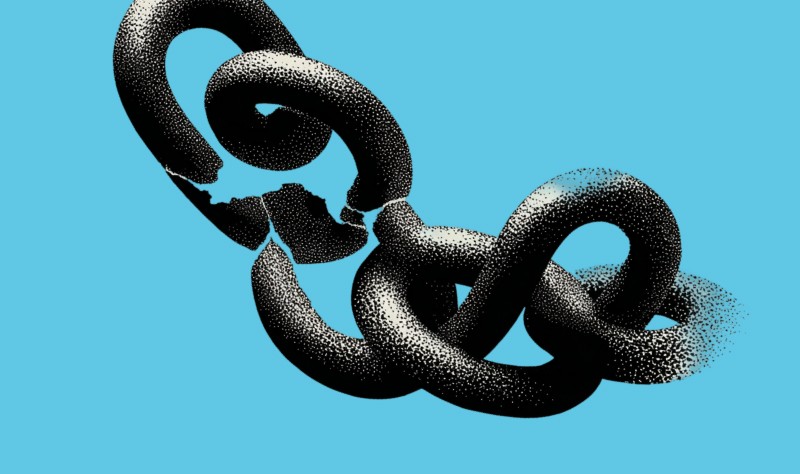The Largest NPM Hack to Date: Why Supply Chain Resilience Requires a New Approach

John Amaral
CTO, Co-Founder
Published :
Sep 16, 2025
Last week's npm supply chain attack represents a watershed moment for software security. Eighteen popular packages, including fundamental utilities like chalk and debug, were compromised in what security researchers are calling the largest npm hack to date. Within hours, malicious code designed to intercept cryptocurrency transactions had been downloaded billions of times across the JavaScript ecosystem.
This wasn't a sophisticated zero-day exploit or an advanced persistent threat campaign. It was something far more concerning - a simple maintainer compromise that turned trusted infrastructure into an attack vector at unprecedented scale.
The Anatomy of Upstream Betrayal
The attack vector was disturbingly straightforward. One seemingly mundane phishing email, led to compromised maintainer accounts, which led to poisoned packages, which led to billions of malicious downloads. This cascading failure from one email was enormous.
The compromised packages included seemingly innocuous utilities that most developers would never suspect of harboring malicious code, color formatting libraries, debugging tools, and string manipulation utilities that form the invisible foundation of countless applications.
The malware itself was sophisticated in its targeting, specifically designed to hook into Web3 wallet APIs like window.ethereum and Solana providers. It rewrote payment destinations and approvals with attacker-controlled addresses, all while remaining completely invisible to users. This wasn't random vandalism, it was a carefully orchestrated financial crime that leveraged the trust inherent in open source dependencies.
Why Traditional Defenses Failed
The npm attack exposes the fundamental inadequacy of current supply chain security approaches. Traditional vulnerability management focuses on known CVEs and security advisories, but this attack bypassed those systems entirely. There were no CVE identifiers, no vulnerability scanners flagging the malicious code, and no security advisories until after the damage was done.
Even organizations following security best practices found themselves exposed. Dependency pinning and lock files provide some protection, but they're useless the moment you need to upgrade. Package auditing tools are reactive by nature, they can only detect threats that have already been identified and catalogued. Against a fresh maintainer compromise affecting packages with billions of downloads, these approaches offer little more than security theater.
The attack succeeded because it exploited the trust relationships that make modern software development possible. When you run npm install, you're not just downloading code, you're extending trust to hundreds of maintainers you've never met, whose identities you can't verify, and whose security practices you can't audit.
Rethinking Supply Chain Resilience
The npm attack demonstrates that supply chain security requires a fundamentally different approach.
With AI-powered threat actors now capable of conducting sophisticated attacks at unprecedented scale, the high-trust model that made the open source ecosystem possible is rapidly breaking down. This means building resilience through multiple phases of defense rather than relying on any single point of control, because sadly, the assumption that maintainers and upstream sources remain trustworthy, has now proven no longer viable.
Phase 0: Freeze and Vet
The foundation of supply chain resilience is treating every dependency as potentially hostile until proven otherwise. This means pinning and locking dependencies, vetting every library in your dependency tree using security scorecards and manual review, and quarantining new versions until they've been thoroughly analyzed.
This approach requires discipline and tooling. Dependencies should be evaluated not just for functionality but for maintainer history, security practices, and the breadth of their maintainer access. Libraries with single maintainers or those that haven't seen security updates in months represent elevated risk regardless of their current vulnerability status.
Phase 1: Upgrade Gate
The npm attack succeeded partly because upgrading dependencies is treated as routine maintenance rather than a security-critical operation. A mature supply chain security posture requires treating every dependency update as a potential attack vector.
This means implementing upgrade gates that require provenance attestations, scan new package tarballs for obfuscation or suspicious lifecycle scripts, and flag unusual maintainer behavior patterns. Automated upgrade tools like Dependabot, while convenient, become attack amplifiers when they blindly pull in compromised packages across an entire organization.
Phase 2: Trusted Libraries Lane
The most significant insight from the npm attack is that you don't need to chase every upstream update to maintain security. Instead of accepting the risk inherent in constant dependency updates, organizations can decouple vulnerability patching from dependency upgrades entirely.
This is where Root's approach becomes essential. Rather than hoping that upstream maintainers remain trustworthy and that their security practices remain sound, Root patches vulnerabilities directly in the versions you're already running. This means you can maintain security without exposing yourself to the supply chain risks that come with frequent upgrades.
Root-patched libraries provide several critical advantages:
Surgical Precision: Vulnerabilities are patched without changing functionality or introducing the behavioral changes that come with version upgrades.
Maintainer Independence: Security updates don't require trusting new upstream code or new maintainer decisions.
Temporal Decoupling: You can address security issues immediately while taking time to properly vet upstream changes.
Attestation Trail: Software Bill of Materials (SBOM) and Vulnerability Exchange (VEX) attestations provide cryptographic proof of your software's security state.
Phase 3: Controlled Upgrades
When you do eventually upgrade dependencies, it should be on your schedule and according to your security requirements, not because a vulnerability scanner is generating alerts. The npm attack shows what happens when upgrade pressure overrides security judgment. Billions of downloads of malicious code occurred because developers felt pressured to stay current with upstream releases.
Controlled upgrades happen after upstream packages have been vetted, after their maintainers have been verified, and after their security practices have been audited. This may mean running older versions of libraries for extended periods, but when those older versions are Root-patched for security issues, the age of the version becomes irrelevant.
Phase 4: Continuous Monitoring
Supply chain security is not a one-time implementation but an ongoing operational requirement. This means monitoring for new CVEs that affect your dependency tree, tracking maintainer changes and access patterns, and watching for provenance gaps that might indicate compromise.
Monitoring also means maintaining awareness of the broader threat landscape. The npm attack wasn't an isolated incident, it's part of a pattern of supply chain attacks that are increasing in frequency and sophistication. Organizations need to assume that similar attacks are happening constantly and build their security posture accordingly.
Decoupling Security from Upstream Risk
The npm attack fundamentally challenges the economic model that makes open source software possible. The packages that were compromised weren't obscure libraries maintained by unknown developers, they were core utilities downloaded billions of times and maintained by contributors with established track records.
This creates an uncomfortable reality - the more popular and trusted a package becomes, the more valuable it becomes as an attack target. The maintainers of these packages become single points of failure not just for individual applications but for large portions of the entire software ecosystem.
Traditional approaches to this problem focus on improving maintainer security, better authentication, improved account security, enhanced monitoring of maintainer activity. These are valuable improvements, but they don't address the fundamental issue: even the most security-conscious maintainer can be compromised.
Root's approach recognizes that maintainer compromise is inevitable and builds resilience accordingly. By patching vulnerabilities independently of upstream maintainers, organizations can maintain security even when upstream trust relationships break down. This doesn't eliminate the value of open source collaboration, but it does eliminate the security dependencies that make supply chain attacks so devastating.
Beyond Reactive Security
The npm attack demonstrates the futility of reactive supply chain security and marks a turning point in how organizations must approach these threats. By the time malicious packages are identified and flagged, billions of downloads have already occurred and malicious code is embedded in deployed applications. This reactive approach reflects a broader problem in software security: the assumption that threats can be identified and catalogued before they cause damage.
The old model of trusting upstream maintainers and relying on vulnerability databases is not just inadequate, it's actively dangerous in an environment where supply chain attacks are becoming more sophisticated and more frequent. A resilient supply chain security posture must be proactive rather than reactive, assuming that compromise will happen and building systems that can maintain security even when upstream trust breaks down.
The npm attack won't be the last compromise of this scale. The multi-phase defense approach outlined above is becoming the new baseline for operating safely in today's evolving threat landscape - that grows in scope and sophistication consistently.
Following the success of this attack, have no doubt, the next npm-scale attack is already in motion. Your defense posture determines whether you'll be among the victims or survivors.









